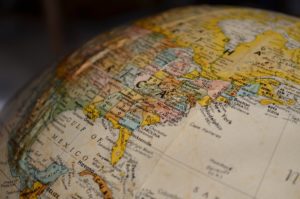Columbus Day History Origins
Columbus Day as we know it didn’t start until it became a U.S. national holiday in 1937. It is one of the 10 federal holidays in this country and one the most inconsistently celebrated. Columbus Day commemorates the day Christopher Columbus arrived in the New World on October 12, 1492. “Columbus sailed the ocean blue in 1492”, as some of us may remember from school. Most of us know the general idea why we celebrate this day in history, but there are some facts that may completely chance the way to see Columbus Day.
The Origins of Christopher Columbus’ Journey
First of all, Columbus non-translated name is actually Cristobal Colon. For being one of the most historically well-known persons little is known about him. Historians know that he was born sometime in 1451 and died on May 20, 1506, but there is no common agreement as to where he was born. Genoa, Italy, is where they suspect he was born, but others claim that he could have been born in Portugal or the Greek islands of Chios.
Columbus Day Fact vs. Myth
Common myth that one of the reason why Columbus wanted to explore the oceans was to prove that the world was around. According to History.com, by 1492 most educated people were aware that the Earth was round. The ancient Greeks had already discovered this as early as the 6th century B.C. by mathematician Pythagoras. Since Greek philosopher Aristotle backed up the discovery with astronomical observations.
First to Sail Across the Atlantic Ocean, Not Quite

Christopher Columbus never set foot in North America.However, we are used to the myth that he discovered the mainland. The title of the first European to sail across the Atlantic Ocean was given to Norse Viking Leif Eriksson who arrived sometime in 1000 A.D, nearly 500 years before Columbus. There are historians who say that Ireland’s Saint Brendan crossed the Atlantic before Eriksson. Leif Eriksson Day is on October 9th, and is often in the shadow of Columbus Day.
The Nina, the Pinta, and the Santa Maria – Not Their Real Names
Remember in grade school when teachers branded those three names into our brains? In reality, two out of those three were just nicknames given by the crew. The names we were taught at school are not the ship’s actual names. For example, the Pinta was given to one of the ships by the sailors which translates to, “the painted one”. Then, the Nina, actually named the Santa Clara, was nicknamed after its owner Juan Nino. Even the Santa Maria had an unofficial nickname, La Gallega, after the province of Galicia where it was built.
Did You Know?
Christopher Columbus made three more trips to the New World after his first voyage in 1492. Over the next decade he came back and visited South America, Central America, and the Caribbean Islands. After his death, Columbus’ heirs went through a lengthy legal battle with the Spanish crown over unpaid wages. They claimed that the Spanish crown short-changed on profits that belonged to Columbus. The legal proceedings lasted until the 300th anniversary of Columbus’ first voyage. That means that Columbus’ heirs fought an employment lawsuit for centuries! I wonder how many attorneys they had to go through until a the final settlement was made.
Enjoy the Day
Davis Law Firm hopes you enjoy this Columbus Day and learned a new thing or two about this day in history. Remember that Davis Law Firm is here for you 24/7 if the unexpected happens. If you or a loved one has been injury in an accident, and want to speak with one of our legal representatives,free consultations are just a phone call away at (210) 444-4444.
